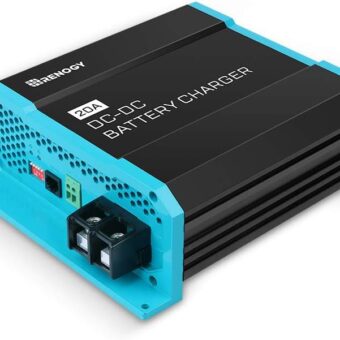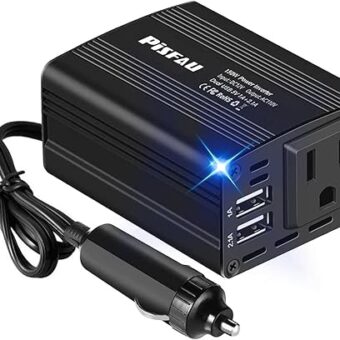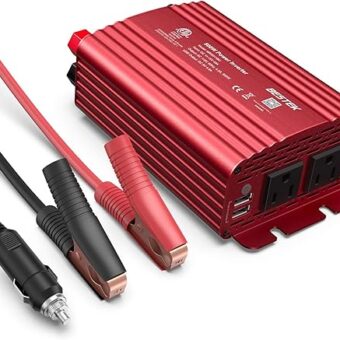Are you frustrated with tangled cords and searching for the right charger for your devices? You’re not alone! Many of us are excited about the convenience of wireless charging, but confusion around compatibility can leave you feeling uncertain. In this blog post, we’ll dive into the world of wireless chargers to help you understand which devices can take advantage of this technology. By clarifying any misconceptions and discussing key factors that affect compatibility, you’ll gain a clearer picture of how to make the most of your wireless charging experience. Let’s get started!
Understanding Wireless Charging Technology
Wireless charging technology has gained significant traction in recent years, becoming a convenient alternative to traditional wired charging methods. But how exactly does it work? Let’s delve into the fascinating principles behind it and explore the various standards that ensure compatibility between devices.
How Wireless Charging Works
Electromagnetic Induction
At the core of wireless charging is the principle of electromagnetic induction. This process involves two coils—one in the charger (the transmitter) and one in the device being charged (the receiver). Here’s a quick breakdown of how it operates:
- Power Supply: The charger is connected to a power source, energizing the transmitter coil.
- Magnetic Field Generation: The energized coil creates a fluctuating magnetic field.
- Energy Transfer: When a compatible device with a receiver coil is placed near the charger, the magnetic field induces an electrical current in the receiver coil.
- Charging the Device: This induced current is then converted into the appropriate voltage and delivered to the device’s battery.
A practical example of this technology is the Apple MagSafe Charger, which utilizes this principle to safely and efficiently charge compatible iPhones.
Resonance Charging
An extension of electromagnetic induction, resonance charging allows for energy transfer over larger distances and improves efficiency. In this method:
- The transmitter and receiver coils are tuned to resonate at the same frequency.
- This resonance ensures that the maximum amount of energy is transferred, even if the device is slightly misaligned.
The Samsung Galaxy S21 series utilizes resonance charging, allowing users to enjoy a more flexible charging experience without needing to perfectly align their device on the charging pad.
Wireless Charging Standards
As wireless charging technology evolves, several standards have emerged to ensure devices are compatible with one another. Below are the prominent wireless charging standards:
Qi
The Qi (pronounced “chee”) standard is the most widely adopted wireless charging protocol. It is used across various devices, including smartphones, tablets, and wearables. Notable devices that support Qi charging include:
- Apple iPhone 12 and later
- Google Pixel 5
- Samsung Galaxy S22
Key Features of Qi:
- Broad Compatibility: Many brands, including Anker and Belkin, produce Qi-compatible chargers.
- Power Range: Supports power levels up to 15W for faster charging, depending on the device.
PMA
The Power Matters Alliance (PMA) was designed primarily for urban environments. Although it has less market penetration compared to Qi, it provides unique benefits in public charging scenarios. Products that support PMA include:
- Samsung Galaxy S6 (with compatible cases)
- Duracell Powermat
Characteristics of PMA:
- Public Charging Stations: Frequently seen in cafes and airports.
- Interoperability: Efforts to combine PMA and Qi standards for better user convenience.
A4WP
The Alliance for Wireless Power (A4WP), now merged with the AirFuel Alliance, focuses on resonance charging. This standard aims to enhance the charging experience by enabling charging over greater distances and with more flexibility. Devices that support A4WP include:
- LG G6
- HTC 10
Benefits of A4WP:
- Greater Alignment Flexibility: Devices do not need to be placed with pinpoint accuracy.
- Efficiency: Offers similar charging speeds to wired alternatives at higher power levels.
Comparison of Wireless Charging Standards
| Feature | Qi | PMA | A4WP |
|---|---|---|---|
| Compatibility | Most smartphones | Limited device support | Certain smartphones |
| Power Support | Up to 15W | Typically up to 10W | Up to 15W or higher |
| Efficiency | High | Moderate | High |
| Charging Distance | Direct contact required | Direct contact required | Can be several centimeters apart |
| Usage | Home and public | Predominantly public | Home and public |
Practical Applications of Wireless Charging
Wireless charging is not just limited to smartphones. Many tech gadgets now support this feature, enhancing user convenience substantially:
- Wearables: The Apple Watch uses a magnetic charging cable that simplifies the charging process.
- Tablets: The Samsung Galaxy Tab S7 supports wireless charging, allowing for a clutter-free workspace.
- Wireless Earbuds: Brands like Samsung’s Galaxy Buds and Apple’s AirPods Pro also rely on wireless charging to ensure their case remains powered for on-the-go use.
As wireless charging technology continues to evolve, its integration into various devices provides an increasingly seamless customer experience. Understanding these principles and standards will empower you to make informed decisions about your devices and charging solutions.
Device Compatibility with Wireless Chargers
Wireless charging has become an integral part of modern technology, offering convenience and efficiency for powering a variety of devices. But not all devices support this nifty feature. Let’s delve into which devices are compatible with wireless charging, the limitations you might encounter, and the criteria that help determine if a given device can charge wirelessly.
Common Devices That Support Wireless Charging
Wireless charging is most commonly associated with mobile devices but has expanded to include a variety of other gadgets. Here’s a breakdown:
1. Smartphones
Most modern smartphones now support wireless charging, making it one of the most popular applications. Some notable models include:
- Apple iPhones: Starting from the iPhone 8 and later models, including the iPhone 13 and 14 series, all support wireless charging, specifically using the Qi standard.
- Samsung Galaxy Series: Models like the Galaxy S10 and newer, Galaxy Note 10 and onward, are equipped with wireless charging capabilities, along with the innovative Galaxy Z Flip and Z Fold series.
- Google Pixel: Models starting from the Pixel 3 and newer support wireless charging, embracing this feature for user convenience.
2. Smartwatches
Smartwatches have also embraced wireless charging, allowing users to conveniently power up on the go:
- Apple Watch: All models, including the latest Apple Watch Series 8 and the Apple Watch SE, utilize a magnetic charging system that is wireless compatible.
- Samsung Galaxy Watch: Models like the Galaxy Watch 4 and Galaxy Watch Active2 feature wireless charging, providing a seamless transition from battery to fully powered.
3. Wireless Earbuds
The convenience of wireless charging has also made its way into the audio realm, especially with earbuds:
- Apple AirPods Pro: These come with a wireless charging case, allowing for effortless charging.
- Samsung Galaxy Buds: Galaxy Buds+ and Galaxy Buds Live include wireless charging capabilities in their respective cases.
Limitations of Wireless Charging
While wireless charging is expanding, there are still notable limitations that you should be aware of, especially concerning device compatibility.
Non-Compatible Devices
- Older Smartphone Models: Devices such as the iPhone 7 or older Android models lacking Qi support will not be compatible with wireless chargers.
- Basic Gadgets: Items like feature phones, older smartwatches from brands like Pebble, or simple Bluetooth headsets might not include wireless charging at all.
- Non-Compatible Materials: Devices with metal or thicker cases can interfere with wireless charging. For instance, some rugged cases or those with built-in batteries may block the Qi signal.
Criteria for Wireless Charging Compatibility
Several factors determine whether your device can support wireless charging. Understanding these can save you from potential charging headaches.
- Qi Standard Support: The majority of modern wireless chargers and devices adhere to the Qi standard. If your device supports this protocol, it is likely compatible.
- Charging Coil Design: A device must have the appropriate charging coils to establish a connection with the charging pad. Typically, thinner devices are more compatible, while bulkier models may face challenges.
- Battery and Power Output: Wireless chargers have different power outputs, influencing charging speed and efficiency. Devices may need a compatible power level to charge properly. For example, many newer devices support fast wireless charging (up to 15 watts) while older models might charge at lower outputs like 5 watts.
Quick Reference: Wireless Charging Compatibility
| Device Type | Examples of Compatible Models | Limitations |
|---|---|---|
| Smartphones | iPhone 8 & later, Samsung Galaxy S10 & newer, Google Pixel 3 & newer | Older models, metal cases |
| Smartwatches | Apple Watch Series 8, Samsung Galaxy Watch 4 | Older models not equipped |
| Wireless Earbuds | Apple AirPods Pro, Samsung Galaxy Buds | Depends on the charging case |
Factors Affecting Wireless Charging Efficiency
Wireless charging has revolutionized the way we power our devices, offering convenience without the need for cords. However, several key factors can significantly influence the charging efficiency. Understanding these aspects can help you get the most out of your wireless charging experience. In this section, we’ll delve into these factors and provide practical tips to ensure optimal charging.
Device Alignment on the Charger
Importance of Alignment
One of the primary factors affecting wireless charging efficiency is the alignment of your device with the charging pad. Wireless chargers work through electromagnetic induction, which requires optimal alignment of the charging coil in both the charger and the device.
Common Issues
- Misalignment: If your smartphone is not perfectly positioned on the charging pad, charging may be slow or not occur at all. For instance, the Apple MagSafe Charger is designed to snap magnetically to compatible iPhones to ensure proper alignment. Using a non-MagSafe phone on this charger could lead to misalignment issues.
Tips for Optimal Alignment
- Use Guides: Some charging pads, like the Samsung Wireless Charger Duo, come with markings to help align devices properly.
- Check Placement: Always ensure your device is centrally placed on the charging pad before leaving it to charge.
Charging Pad’s Output Power
Wattage Matters
The output power of a wireless charging pad can vary significantly between models. Higher wattage generally leads to faster charging, but compatibility with the device is also crucial. For example, the Anker Wireless Charger can support up to 15W for compatible devices like the Samsung Galaxy S21, but may only deliver 5W for devices that do not support fast charging.
Output Comparison Table
| Charger Model | Max Output Power | Compatible Devices |
|---|---|---|
| Belkin Boost Up Wireless Charger | 10W | iPhone X, iPhone 8, Samsung Galaxy S9 |
| RAVPower 10W Fast Wireless Charger | 10W | iPhone 12, Galaxy S20 |
| Anker Wireless Charger | 15W | Galaxy S21, Note 10 |
| Apple MagSafe Charger | 15W | iPhone 12 and newer |
Considerations
- Match Wattage: Ensure your device supports the charging pad’s output. Using a 15W charger with a device that only supports 5W will revert to the lower output.
- Use Quality Chargers: Opt for reputable brands that comply with industry standards, as seen in options like the Aukey Wireless Charger.
Obstructive Materials
Impacts of Foreign Objects
Obstructions between the device and the charging pad can hinder charging efficiency. Metal cases or objects placed on or near the charging pad can interfere with the electromagnetic field required for charging.
Common Obstructions
- Metal Cases: Using a metal phone case can block signals significantly. Instead, opt for cases made of plastic or other non-metal materials.
- Foreign Objects: Coins, keys, and other small items can be inadvertently left on charging pads, affecting charging performance.
Recommendations
- Case Selection: Consider using products like the OtterBox Defender Series case, which is specifically designed to provide protection while maintaining wireless charging compatibility.
- Regular Check-ups: Make it a habit to clear the charging area of any small objects before placing your device on the pad.
Environmental Factors
Temperature Sensitivity
External factors, like temperature, can also play a role in charging efficiency. Most wireless chargers are designed to operate within a specific temperature range.
Ideal Conditions
- Room Temperature: Most manufacturers recommend a temperature range between 15°C (59°F) and 30°C (86°F) for optimal performance.
- Ventilation: Ensure the charging pad has adequate airflow; avoid covering it with fabrics or other items that can trap heat.
Example Products
- Belkin Boost Up Wireless Charging Pad: This model is built to maintain an optimal temperature while charging your device.
Understanding Compatibility and Limitations
In conclusion, while wireless charging offers a convenient way to power up your devices, it’s essential to recognize that not all devices are compatible. By taking the time to check your device’s specifications and ensure it adheres to the necessary standards, you can enjoy the full benefits of this technology. Stay informed and charge smarter!





![[Ultra Thin] 2 Pack Airtag Card Case for Purse, Handbag, Backpack Wallet, Clutch, Slim Airtag Holder, 0.1 inch Thickness (Black)](https://driveinstylepro.com/wp-content/uploads/2024/08/ultra-thin-2-pack-airtag-card-case-for-purse-handbag-backpack-wallet--340x340.jpg)
I’ve been using the Anker wireless charger with my Samsung Galaxy S21, and it’s been great! Just a tip: make sure your phone case isn’t too thick, or it won’t charge properly.
Great tip! Thicker cases can definitely interfere with the charging process. Glad to hear the Anker charger is working well for you!
I love wireless chargers, but I’ve noticed they can be super slow sometimes. Anyone else have issues with that? Maybe it’s just my old iPhone X!
How about covering some eco-friendly wireless chargers next time? I’d love to see options that are better for the planet!
That’s a fantastic idea! I’ll look into writing about eco-friendly options for wireless charging soon. Thanks for the suggestion!
Could you expand a bit more on the ‘Factors Affecting Wireless Charging Efficiency’ section? I’d love to know what settings or conditions can help improve charging speeds.
This was a cool read! Can anyone recommend more articles or blogs about the best wireless chargers on the market right now?